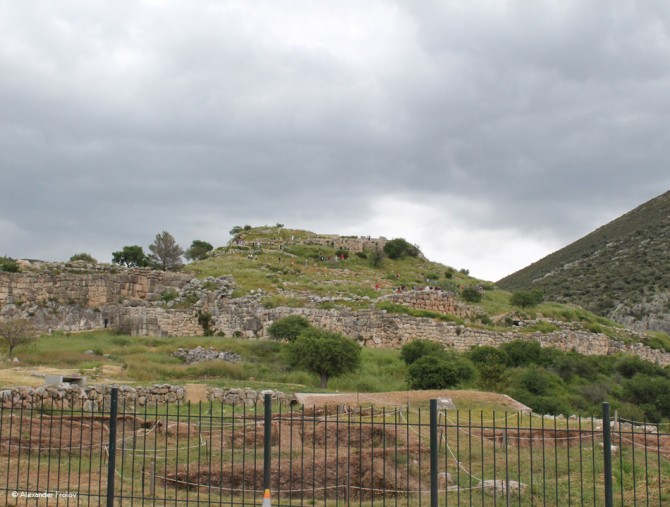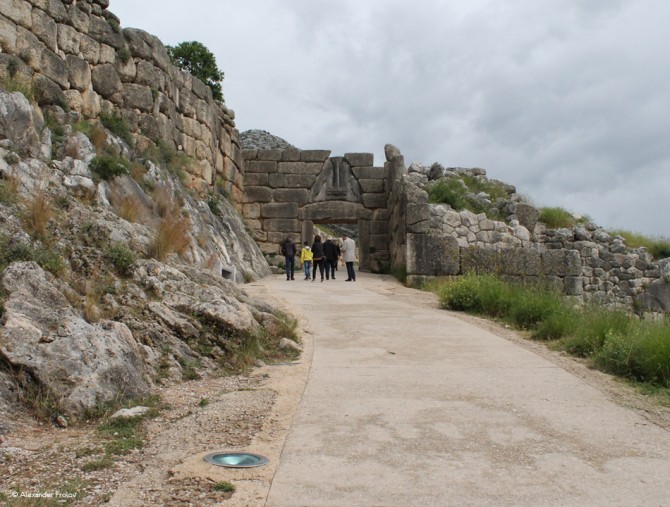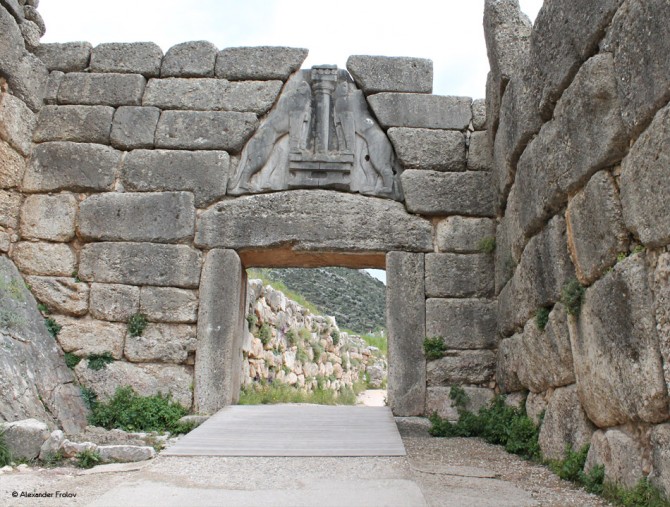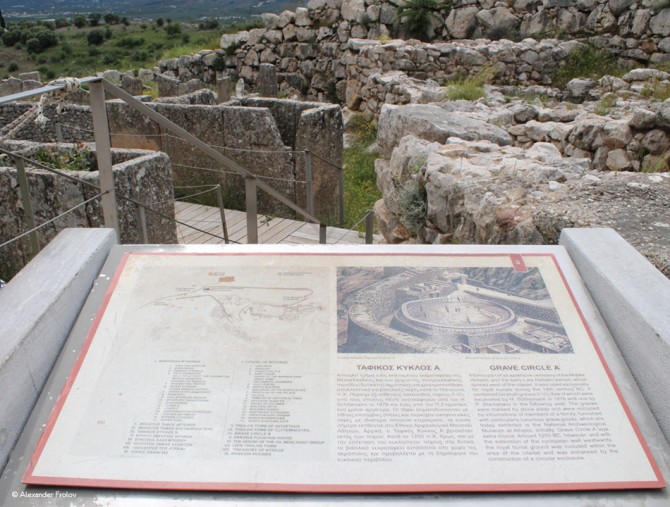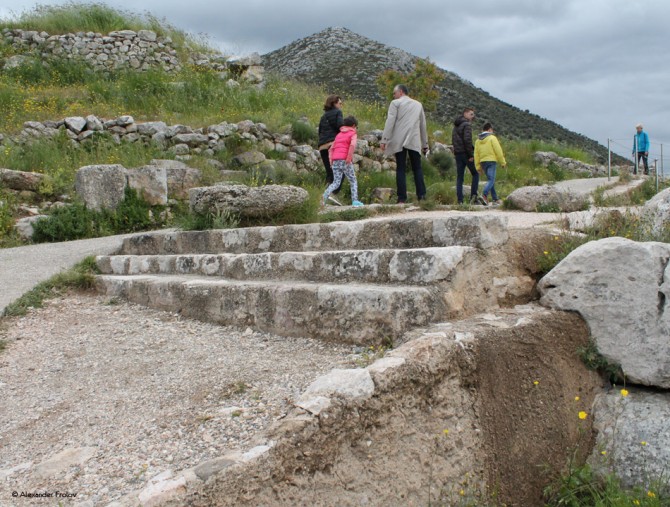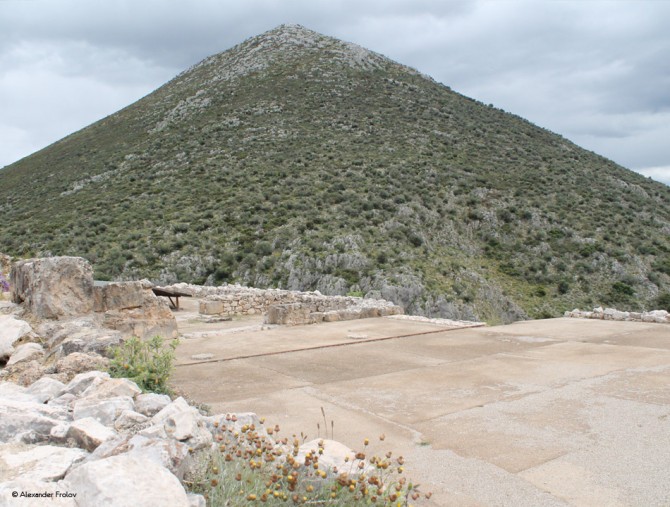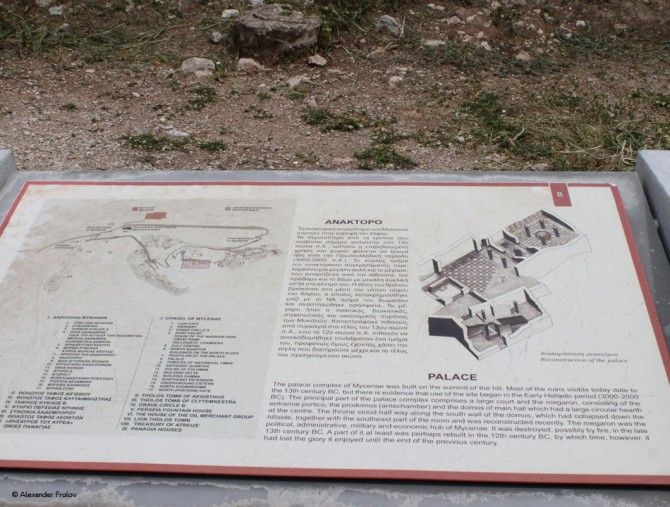Златообильные Микены
Микены – это царство мифического Агамемнона. Того самого, одного из главных героев гомеровской "Илиады". Город, бывший в свое время (поздний бронзовый век, 1550-1200 гг. до Р. X.) "резиденцией царей", расположен в 90 километров к юго-западу от Афин в северо-восточной части Пелопоннеса.
Тогда, более трех тысяч лет назад, Микены были одним из главных центров греческой цивилизации, военной крепостью, которая доминировала над большой частью южной Греции и отличались огромным богатством. Это, их и сгубило. Несмотря на агрессивный характер, микенской цивилизации ей пришлось уступить место новым хищникам. Ее падение связывают с нашествием дорийцев (около 1200 лет до Р.Х.).
Сегодня на месте бывшей резиденции царей лишь руины, которые, однако, заслуживают внимания и вот почему. Люди микенской культуры строили не на века, а на тысячелетия. Каменные блоки, используемые ими, были так велики, что, по мнению, живших позже (но "древних" для нас) греков, их могли установить на нужное место только одноглазые великаны - циклопы. Эта же "циклопическая" кладка использовалась и при строительстве сохранившихся до сих пор легендарных ´Львиных воротª, построенных одновременно с первыми укреплениями Микен (около 1350 г. До Р.Х.).
Артефакты, найденные на месте раскопок можно увидеть в местном археологическом музее.
Как добраться до археологических раскопок в Микенах:
- на машине из Афин (120 км) по трассе Олимпия Одос A8 / E94
- на машине из Афин (120 км) по трассе Олимпия Одос A8 / E94
- на автобусе с автовокзала Кифисью (примерно 1,5 часа)
Археологические раскопки и музей Микен, часы работы: 8:00-15:00
Цена билета: 8 евро
Фото и текст: Александр Фролов
Archaeological Site of Mycenae
Mycenae, the kingdom of the mythical Agamemnon, was the most important and richest palatial center of the Late Bronze Age in Greece. In the second millennium BC, it was one of the major centers, the birthplace of the glorious Mycenaean civilization and a military stronghold which dominated a big part of the southern Greece. Today is one of the most important archaeological sites in the country and a great chance for the visitors to travel back to a magnificent past.
The legend has it that the founder of Mycenae was Perseus, son of Zeus and Danae, the daughter of Acrisius, the king of Argos. Perseus’s descendants reigned at Mycenae for three generations until Eurystheus, the last of them, who died childless. Then the Mycenians chose Atreus as their king, who was son of Pelops and father of Agamemnon and Menelaus. Although Mycenae was first inhabited around the 7th millennium BC, most of the monuments that are visible today belong to the period of prosperity of the area, the Late Bronze Age, between 1350 and 1200 BC. Around 1700 BC the first hegemonic and aristocratic families appeared, as evidenced by the use of monumental tombs, which had rich grave goods and were contained in a stone wall, known as Grave Circle B. This trend continued in the beginning of the Mycenaean period, around 1600 BC, when a large main building was built at the top of the hill, along with a second stone enclosure, known as Grave Circle A, and the first vaulted tombs. The construction of the palace, which is visible today, started around 1350 BC, about the same period with the beginning of the fortification of the citadel.
Today, visiting this significant archaeological site, the first thing you will see is the majestic Lion Gate which will welcome you to the place. Other monuments you can see are: The vaulted tomb of Atreus, which dominated the western slope of the ridge of Panagitsa, in the southwest of the citadel of Mycenae and is one of the largest and most perfect Mycenaean vaulted tombs and the most impressive of the nine which have been found at Mycenae. The cyclopean walls that surrounded the Acropolis of Mycenae, which according to the legend, had been built by the Cyclops at the behest of Perseus. The religious center of Mycenae, a complex of buildings of religious character, which occupied a large area of the acropolis. The underground tank, at the northeast corner of the city to the northern cyclopean wall, which ensured the water supply of Mycenae, and is now visible to the visitor only with flashlight. You can also see the vaulted tombs of Aegisthus and Clytemnistra and the House of the Oil Merchant. Unfortunately the glorious palace of Agamemnon is not preserved. Outside the walls of the Acropolis, you can also see the Lion Vaulted Tomp and visit the Museum.
Archaeological site of Mycenae, Mycenae, prefecture of Argolida, Peloponesse. Visiting hours: 8:00-15:00. Ticket prices: (Full) 8 euros, (Reduced) 4 euros. Valid for the Archaeological Museum of Mycenae, the Vaulted tomb of the Lions and the Acropolis of Mycenae.
How to get there: By car from Athens (distance 120,2 km) via Olympia Odos/A8/E94. By bus from Athens: Daily buses from Athens to Mycenae. The bus trip is about 1 1/2 hour. Kifissos Bus Station (100 Kifissou Avenue, Athens), tel.: +30 210 51 34 588.

